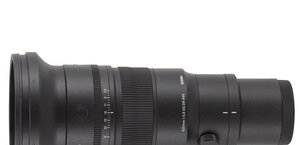Tamron 17-70 mm f/2.8 Di III-A VC RXD
4. Image resolution
If your results are expressed in lpmm, as it is the case here, the values reached by different lenses remain the same, no matter whether you use a full frame detector or you work in the APS-C mode.
Let's check how the Tamron 17–70 mm f/2.8 Di III-A VC RXD compares – its results in the frame centre at 17, 30, 50, and 70 focal lengths are presented below.
Please Support UsIf you enjoy our reviews and articles, and you want us to continue our work please, support our website by donating through PayPal. The funds are going to be used for paying our editorial team, renting servers, and equipping our testing studio; only that way we will be able to continue providing you interesting content for free. |
- - - - - - - - - - - - - - - - - - - - - - - - - - - - - - - - - - - - - - - - - - - - - - - -
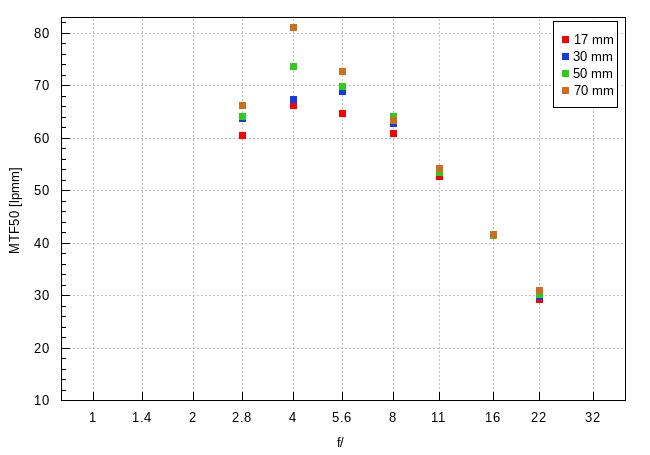
It's clear the results aren't perfectly even and the longer the focal length is, the better the lens fares. Still, even at the shortest focal length it performs quite well, being able to exceed a very high level of 60 lpmm even at the maximum relative aperture; on slight stopping down you get MTFs over 65 lpmm.
A bit better situation can be observed at the 30 mm focal length. At the maximum relative aperture you get a result of almost 64 lpmm and on stopping down the aperture you can reach almost 69 lpmm. Further improvement is visible at 50 mm, where, by f/2.8, the lens exceeds slightly 64 lpmm, and its maximum results approach almost 74 lpmm.
The best resolution results, which can be easily described as sensational, you see at the maximum focal length. Already by f/2.8 the MTF50 function values exceed 66 lpmm and the maximum level the lens is able to reach amounts to 81 lpmm. These are resolution values worth the best system primes and they certainly deserve a round of applause.
What about the edge of the frame? Will the performance be equally good? Let's glance at a graph, shown below.
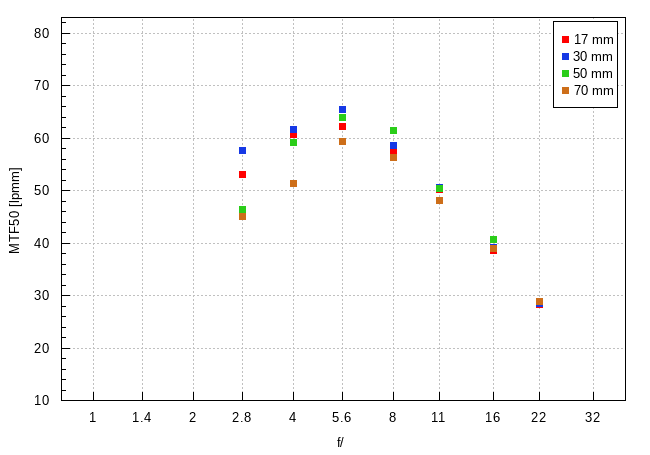
Once again the performance is not perfectly even but the ranking of focal lengths changes a bit. It seems Tamron adopted a very sensible approach – the best results on the edge of the frame are guaranteed for the shortest focal lengths, so in a place where they are the most sought-after.
In the 17-30 mm range the results are clearly above 50 lpmm up from the maximum relative aperture and they ensure fully useful images. On stopping down the lens resolution increases to well over 60 lpmm.
At the 50 mm focal length and by f/2.8 aperture you get a result near 46 lpmm but the situation improves on stopping down very quickly – by f/4.0 you see a level of 59 lpmm, and by f/5.6 the lens gets to almost 64 lpmm. At the maximum focal length you don't observe such a fast improvement – by f/2.8 the MTFs are near 45 lpmm but the peak of the performance amounts to less than 60 lpmm.
Still, it's important the lens didn't have any slip-up in this category. You deal with decent results across the whole focal range and by all apertures; in many cases these can be called good or even very good.
Taking into account the parameters of the tested lens, by and large unique, I think the constructors of the Tamron fulfilled their task very capably – a round of applause!
At the end of this chapter traditionally we present crops taken from photos of our testing chart saved as JPEG files along RAW files we used for the analysis above.
| A7R III, APS-C, JPEG, 17 mm, f/2.8 |
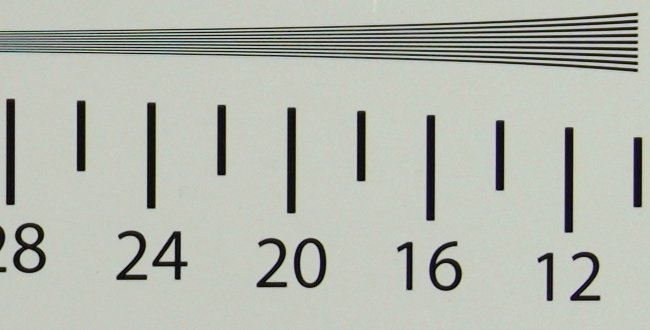 |
| A7R III, APS-C, JPEG, 70 mm, f/4.0 |
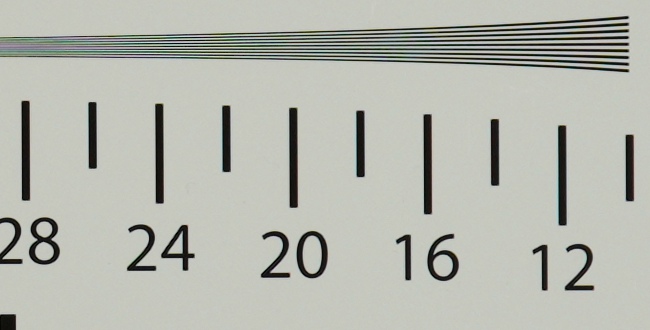 |




